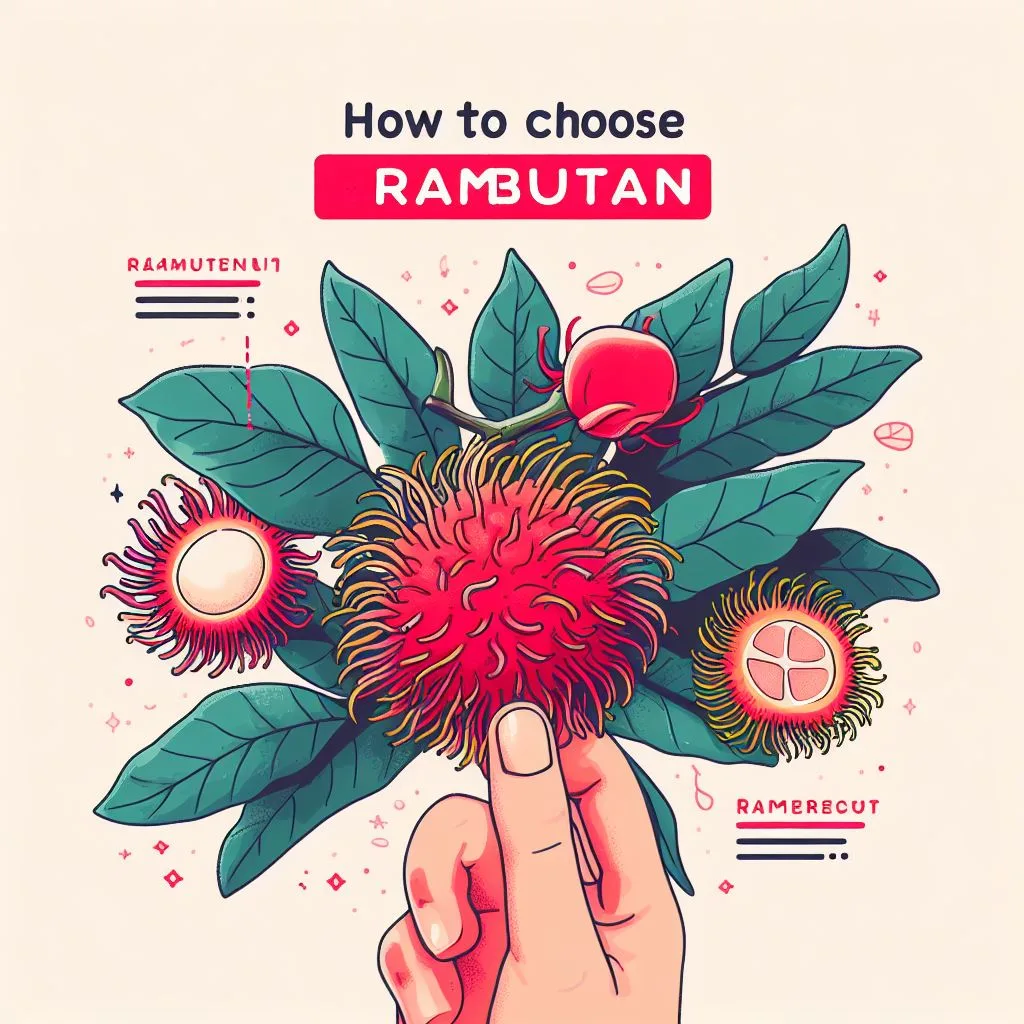
Rambutan, known as “hairy lychee” due to its spiky outer skin, is a tropical fruit native to Southeast Asia. With its juicy and sweet flesh, rambutan has gained popularity worldwide. However, to truly enjoy the delightful taste of rambutan, it is crucial to assess its ripeness accurately. Understanding the ripening process will help you pick the perfect fruit. In this article, we will explore expert tips on assessing the ripeness of rambutan, ensuring an enjoyable culinary experience.
Why is it Important to Assess the Ripeness of Rambutan?
Assessing the ripeness of rambutan is essential to fully savor its flavors and texture. An unripe rambutan can be sour and lack the sweetness that characterizes this delectable fruit. On the other hand, an overripe rambutan may be mushy and have an unpleasant taste. By accurately assessing the ripeness, you can indulge in the perfect balance of sweetness and juiciness that ripe rambutan offers.
Visual Cues for Identifying Ripe Rambutan
When it comes to assessing the ripeness of rambutan, visual cues play a vital role. Look for rambutans with vibrant, bright colors, such as a deep red or yellow, depending on the variety. Avoid fruits with a greenish hue, as they are likely unripe. Additionally, observe the spikes on the skin; if they are soft and pliable, it indicates ripeness. However, be cautious not to mistake a wrinkled skin for ripeness, as it may indicate overripeness.
Texture and Firmness Indicators of Ripe Rambutan
Apart from visual cues, the texture and firmness of rambutan are essential indicators of ripeness. Gently squeeze the fruit, and it should give slightly without being too soft. An unripe rambutan will be firm and hard to the touch, while an overripe one will feel mushy. Opt for fruits that have a slight give when squeezed, ensuring a perfect balance between firmness and juiciness.
The Fragrance Test for Determining Ripe Rambutan
The fragrance of a rambutan can provide valuable insights into its ripeness. Ripe rambutans emit a sweet and enticing aroma that intensifies as the fruit ripens further. Take a whiff of the fruit, and if it has a pleasant and fragrant smell, it is a good indicator of ripeness. However, be cautious not to mistake a fermented or sour smell, as it may signify overripeness.
Tasting and Assessing the Sweetness of Ripe Rambutan
The ultimate test of ripeness lies in tasting the fruit. Peel the skin carefully, ensuring not to damage the flesh. Take a small bite and savor the sweetness and juiciness. Ripe rambutans will have a perfect balance of sweetness without being overly sugary. The flesh should be tender and succulent, melting in your mouth. If the taste satisfies your palate, you can be confident that the rambutan is ripe and ready to be enjoyed.
How to Store and Handle Ripe Rambutan
Once you have assessed the ripeness of rambutan and have a batch of perfectly ripe fruits, it is essential to store and handle them correctly. Ripe rambutans are highly perishable and can quickly deteriorate if not handled properly. Store them in a cool and well-ventilated area, away from direct sunlight. Avoid washing the fruits until you are ready to consume them, as excess moisture can lead to spoilage. To extend their shelf life, place ripe rambutans in a plastic bag with perforations to maintain optimal humidity.
Common Mistakes to Avoid When Assessing Rambutan Ripeness
While assessing the ripeness of rambutan, it is crucial to avoid common mistakes that can lead to disappointment. One common mistake is relying solely on visual cues and neglecting other indicators of ripeness. Remember to consider texture, firmness, fragrance, and taste for a comprehensive assessment. Another mistake is assuming that all rambutans on a single bunch ripen simultaneously. Each fruit ripens at its own pace, so it is crucial to assess them individually.
Expert Tips and Tricks for Accurately Assessing Rambutan Ripeness
To become a true expert in assessing rambutan ripeness, here are some additional tips and tricks to enhance your skills. When selecting rambutans, aim for fruits with a uniform color and size, as they are more likely to have consistent ripeness. Additionally, gently shake the fruit near your ear; if you hear the seed moving inside, it is a sign of ripeness. Lastly, for those who prefer slightly less sweetness, rambutans with a hint of green near the stem can offer a delightful balance of flavors.
Conclusion: Enjoying Perfectly Ripe Rambutan
Assessing the ripeness of rambutan is a skill that can be honed with practice and knowledge. By utilizing visual cues, texture and firmness indicators, fragrance tests, and tasting, you can confidently select perfectly ripe rambutans. Remember to handle and store these delicate fruits with care to extend their shelf life. Avoid common mistakes and follow the expert tips and tricks to become a master in assessing rambutan ripeness. Now, armed with this knowledge, you can indulge in the juicy and sweet flavors of ripe rambutan, elevating your culinary experience to new heights.
Enjoy the lusciousness of ripe rambutan with our selection of fresh and carefully picked fruits. Visit our website today to order your perfect batch!






